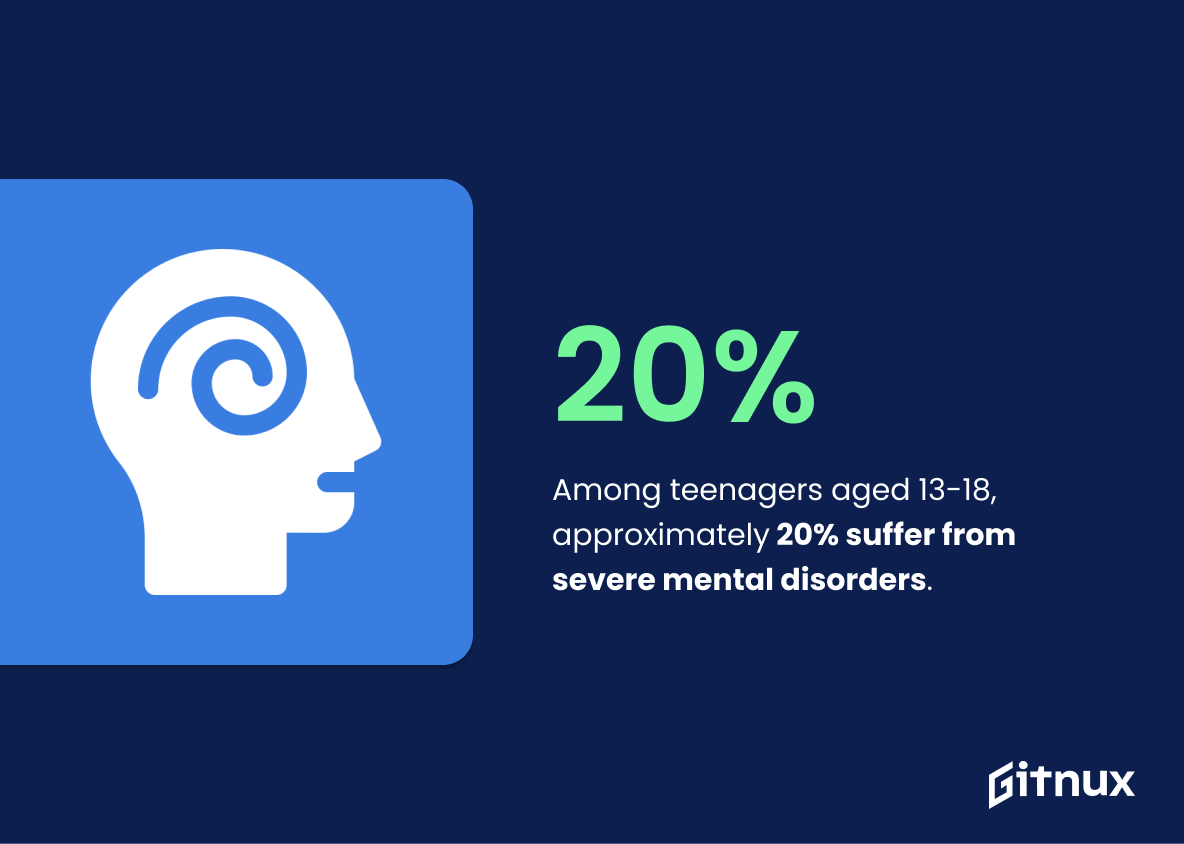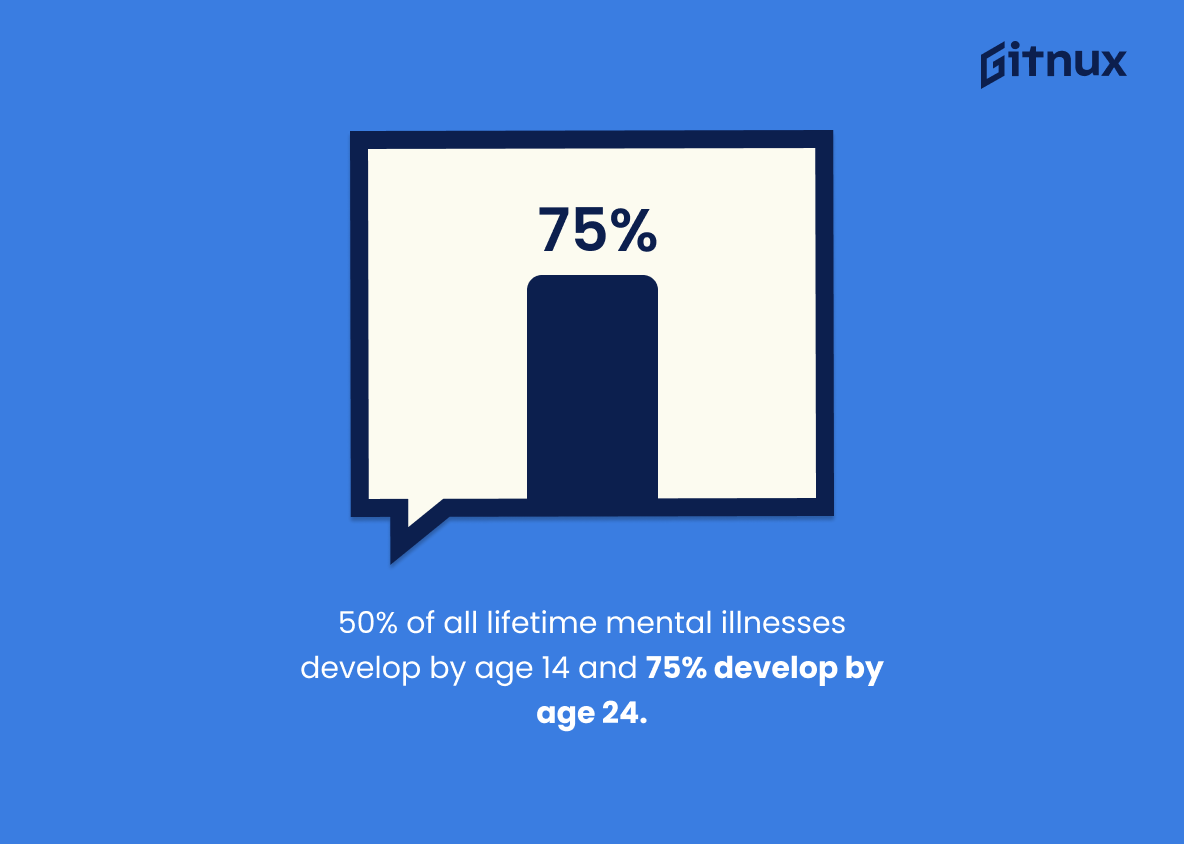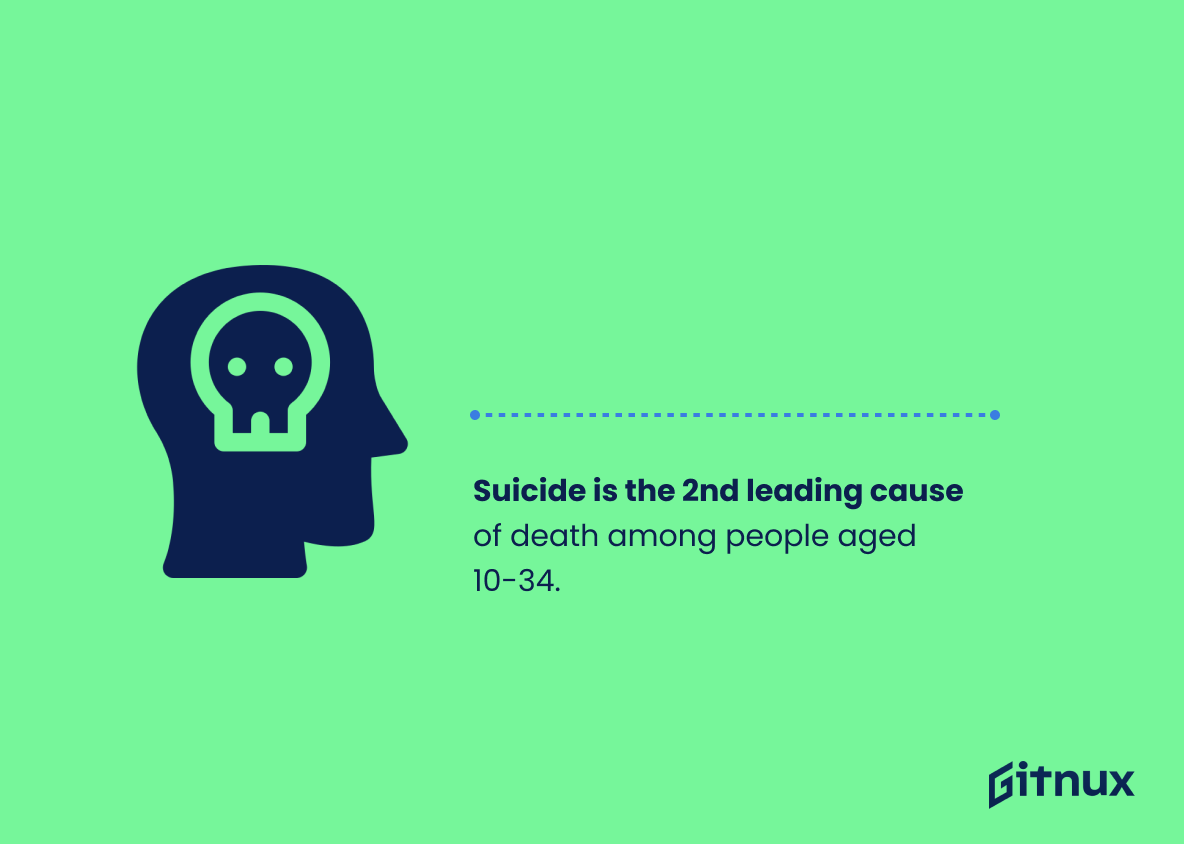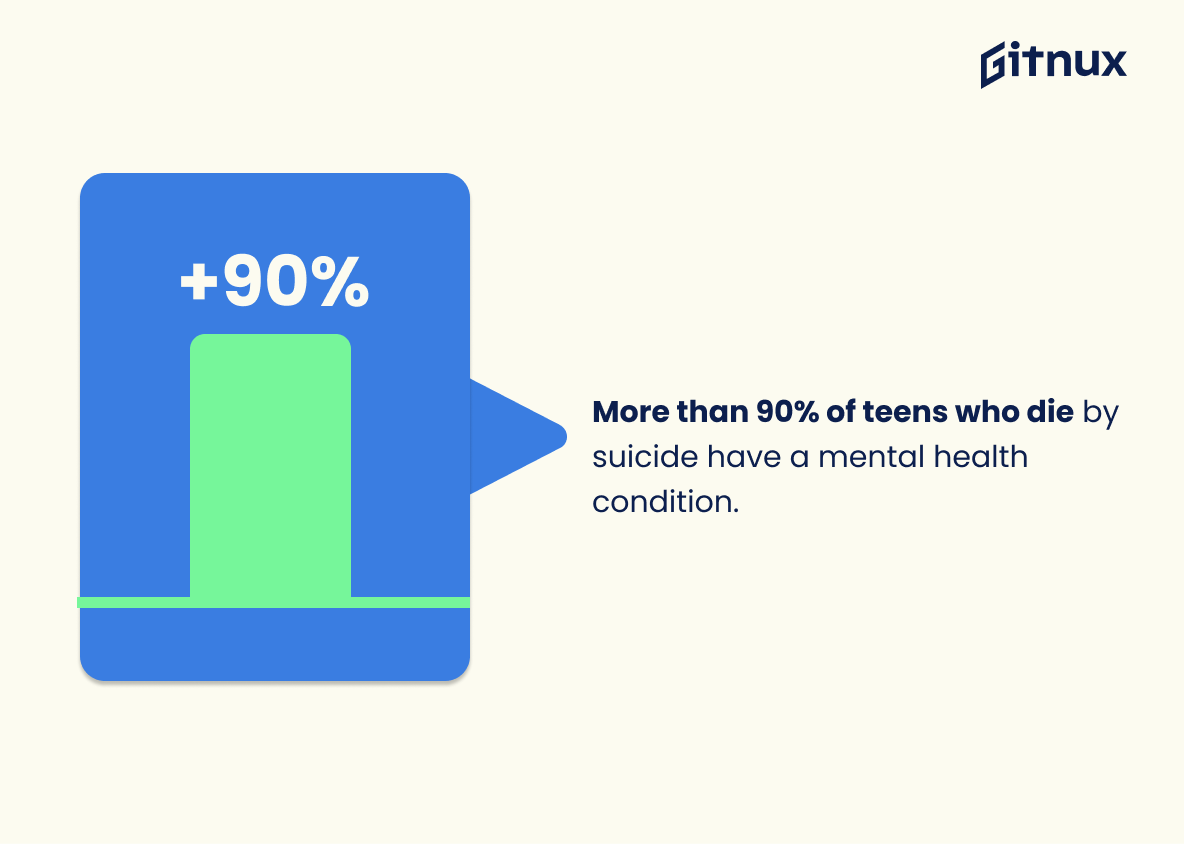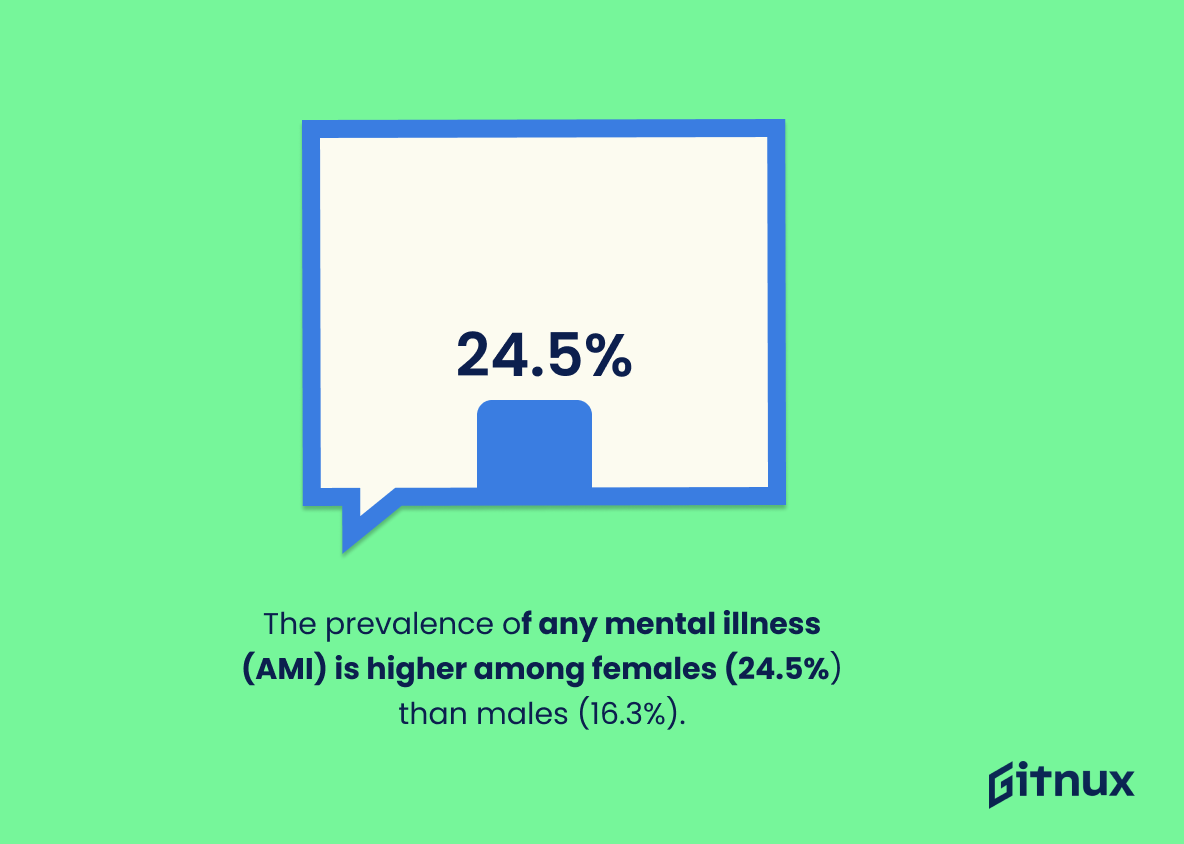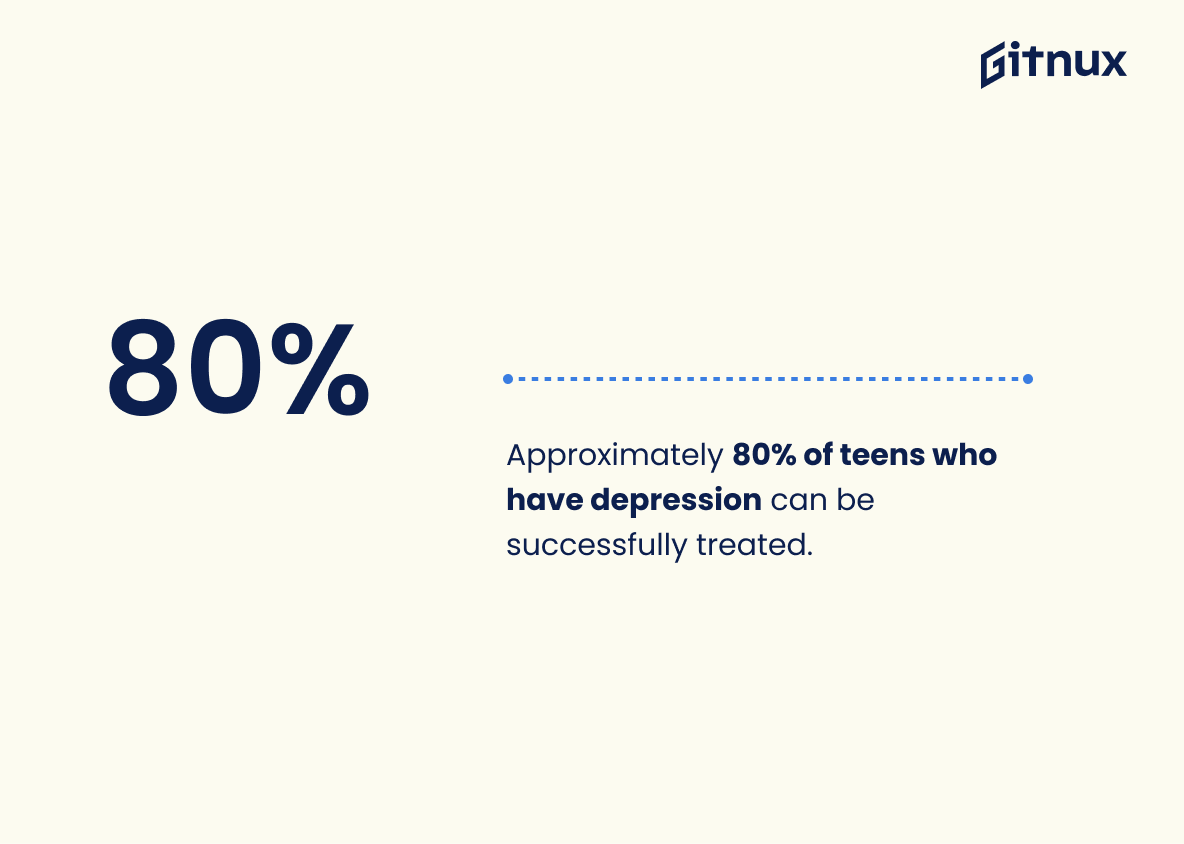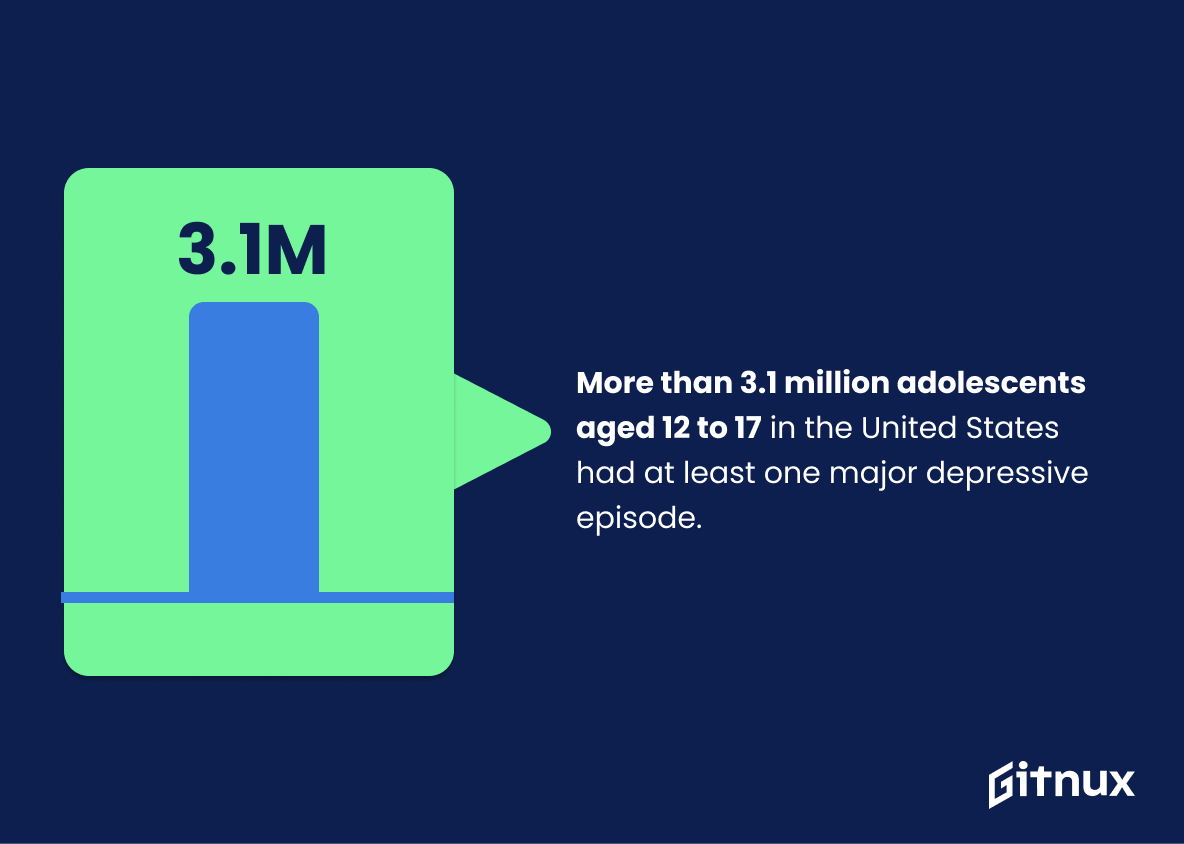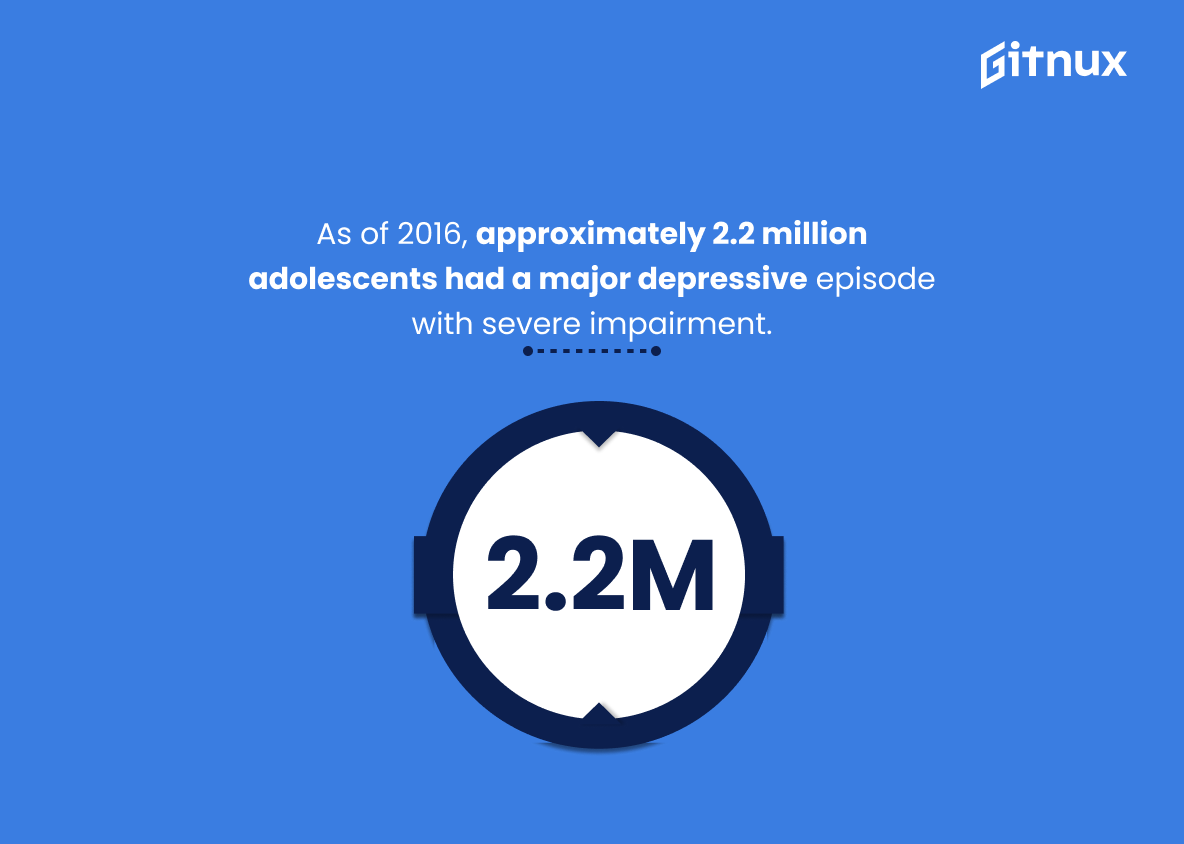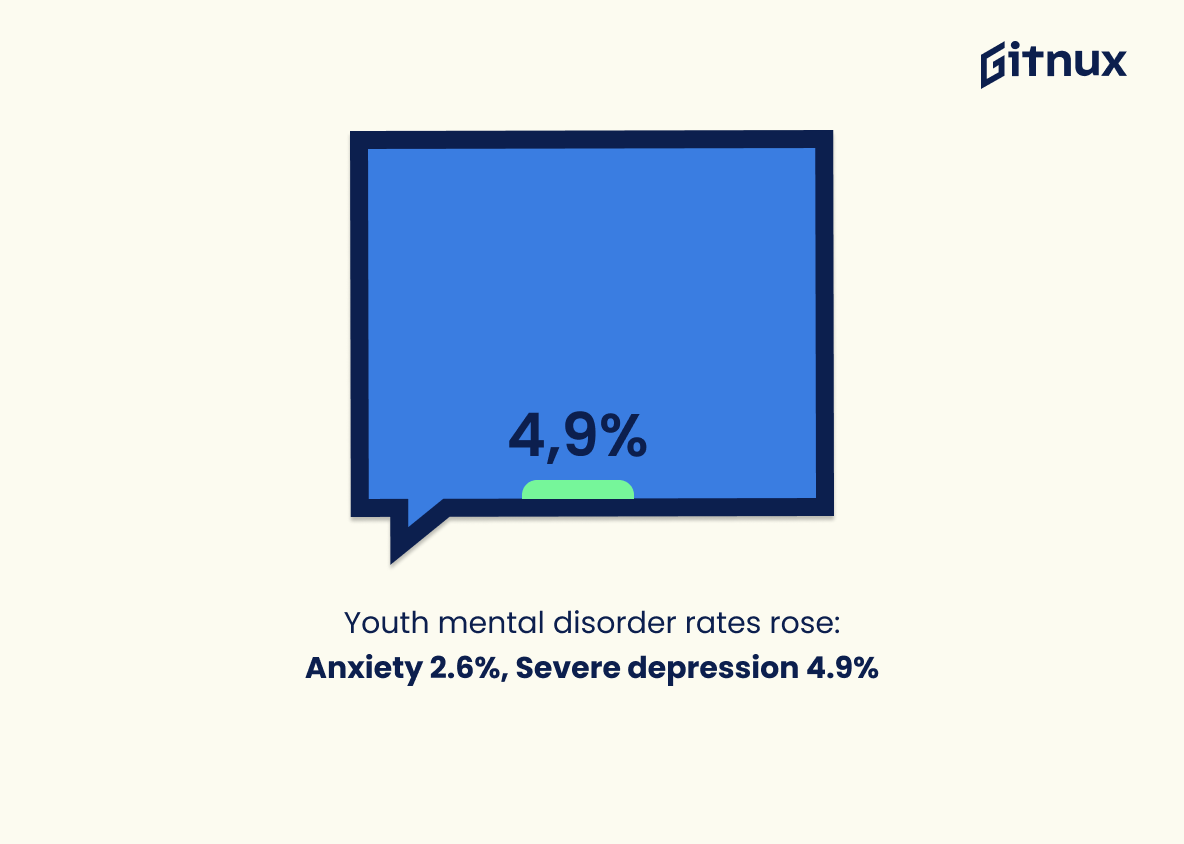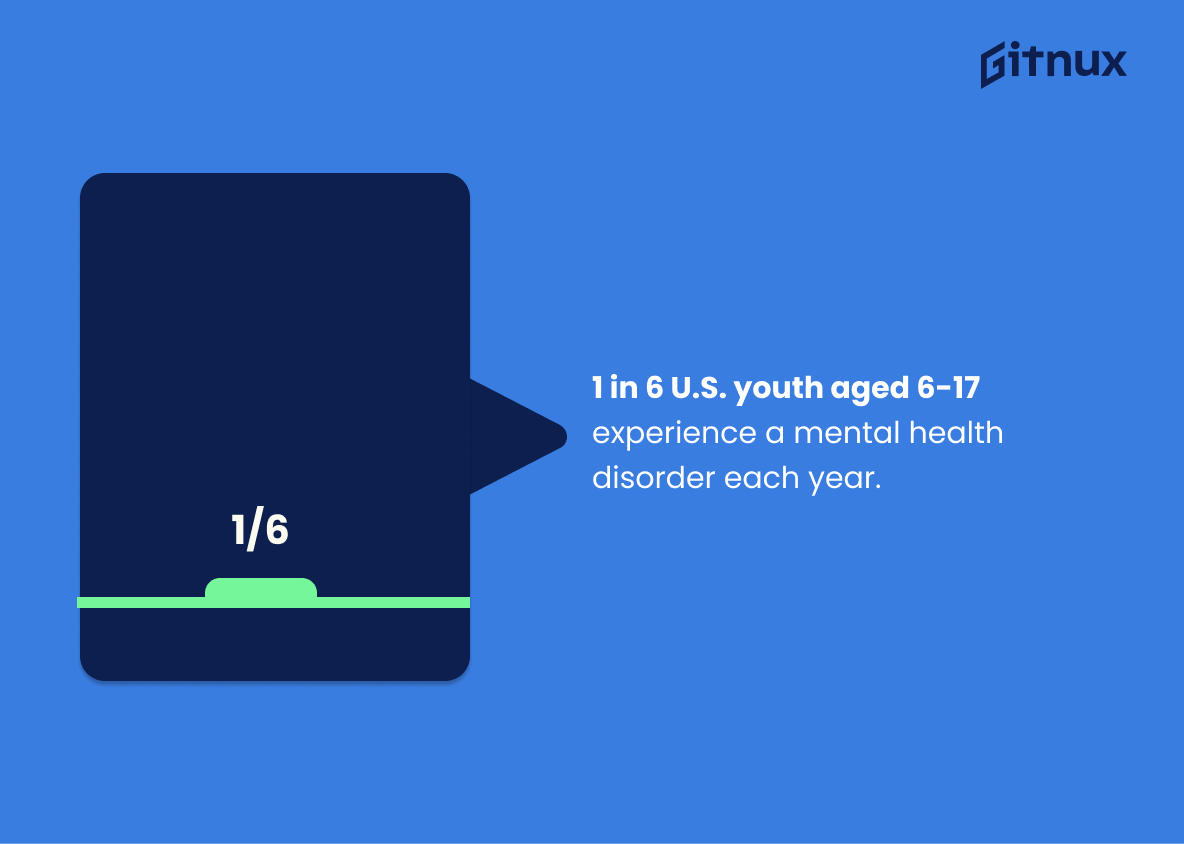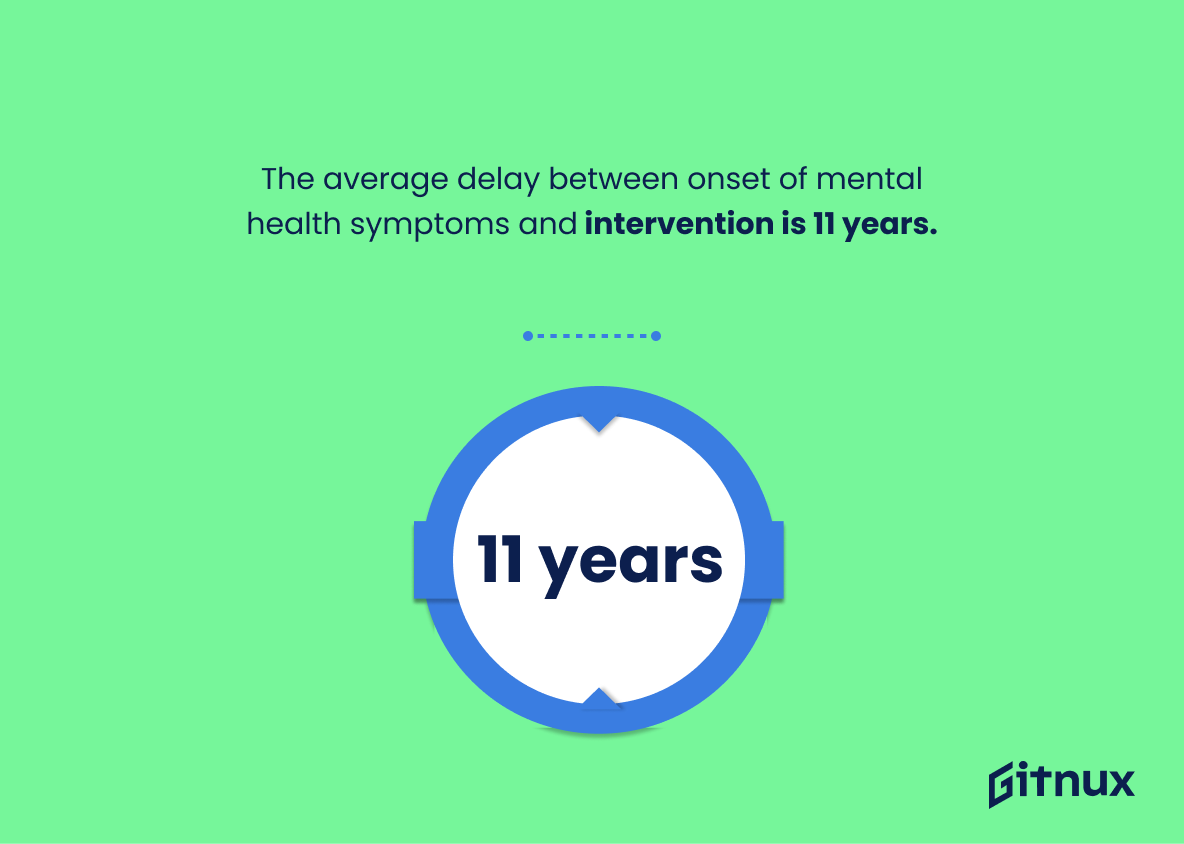The escalating numbers surrounding teen mental health often pass unnoticed, hidden behind the facade of typical adolescent behaviors. Yet, they are some of the most significant statistics facing global health today. This blog post aims to shed light on the complexities of teen mental health, supported by the most recent and comprehensive statistics. We will navigate the stark realities of anxiety, depression, and other mental health disorders prevalent among teens. Unveiling these figures is a step towards understanding the urgency of the situation and the pressing need to advocate mental health in young populations worldwide.
The Latest Teen Mental Health Statistics Unveiled
Among teenagers aged 13-18, approximately 20% suffer from severe mental disorders.
Highlighting that one in five teenagers grapples with serious mental health conditions serves as a stark reminder of the pervasive nature of mental health issues amongst youth. This whopping 20% is not just a statistic. It’s a clarion call demanding immediate attention and proactive measures targeted towards teenager mental health. By shedding light on the pressing reality, this post aims to engage readers in a meaningful conversation about mental health, underscore the urgency for better resources, and create a supportive environment for teenagers battling these invisible wars. The numbers are alarming, emphasizing that mental health is not a ‘passing phase’ but a serious concern requiring immediate intervention.
50% of all lifetime mental illnesses develop by age 14 and 75% develop by age 24.
Presenting a different perspective, consider this statistical revelation as a vivid spotlight on the sensitive time frame of adolescence and young adulthood. It’s an eye-opener telling us that, analogous to how a sapling’s growth conditions influences the health of the mature tree, critical patterns for lifetime mental health are often set in motion in our formative years.
The given statistic acts as a silent alarm clock. It rings loud in our understanding of mental health, amplifying the recognition of the substantial percentage of mental health conditions that surface by ages 14 and 24. This knowledge reinforces the urgency of prioritizing monitoring, intervention, and treatment efforts during these vital developmental stages.
This data nugget, in the broad spectrum of teen mental health statistics, serves as a compelling compass. It guides us to fix our focus on prevention and early intervention strategies, highlighting their potential to significantly decrease the lifelong impact of mental health disorders.
Ultimately, this statistic brings to our attention a crucial narrative – the need for comprehensive mental health education and awareness programs targeting youngsters and adolescents, thereby cultivating a proactive approach towards mental well-being.
Suicide is the 2nd leading cause of death among people aged 10-34.
An awareness of statistics like, ‘Suicide is the 2nd leading cause of death among people aged 10-34’, can shape the dialogue on teen mental health in significant ways. Imagine a labyrinth, with each turn symbolizing a new challenge for teenagers navigating the complexities of today’s world – hormonal changes, academic pressures, maintaining social image, bullying, among others. As they venture deeper, their mental well-being can come under serious strain, at times leading to tragic consequences. By acknowledging this harrowing reality revealed by the statistics in our dialogue, we can construct a more accurate narrative on teen mental health, sensitizing readers towards the gravity of the issue and reinforcing the imperative of robust mental health support for our young population.
More than 90% of teens who die by suicide have a mental health condition.
Drawing attention to the startling revelation that over 90% of teens who succumb to suicide have a mental health condition should resonate deeply with readers. It serves as a distressing wake-up call, spotlighting the inextricable link between adolescent mental health and the tragically elevated rates of suicide. As you navigate this blog post, this figure lays down a critical foundation, underscoring the indispensable need for early and aggressive mental health interventions in teens. It’s like the lighthouse, casting a stark and unavoidable light on the silent crisis brewing in our society. So let’s steer the conversation towards prevention, awareness, and support, inspired by such strong numbers.
In 2017, around 13% of U.S. teens ages 12-17 said they had experienced at least one major depressive episode in the past year.
Highlighting the statistic – ‘In 2017, around 13% of U.S. teens ages 12-17 shared that they had encountered a major depressive episode in the previous year.’ – plays a significant role in our discussion on Teen Mental Health Statistics. It paints a stark image of the mental health landscape among teenagers, pointing to a pervasive and critical issue that demands immediate attention. This figure not only provides a tangible measure of the pervasiveness of depression in this age group but also amplifies the reality of their experiences, serving as a catalyst for increased awareness, urgency for preventive measures, and undoubtedly, a call to action for innovative solutions in teen mental health management.
Girls are more likely than boys to experience depression. An estimated 13.8% of adolescent girls have experienced at least one major depressive episode in the past year.
Highlighting the statistic that “13.8% of adolescent girls have experienced at least one major depressive episode in the past year” serves a critical role in our conversation surrounding teen mental health. It illuminates the stark reality that girls are disproportionately affected by depression, amplifying the urgency for gender-specific mental health support strategies. Bringing awareness to this statistic is essential for garnering more resources, enhancing prevention efforts, and tailoring treatment plans to address the unique challenges that girls with depression face. Thus, this figure stands as a beacon, guiding our discussions to ensure a comprehensive representation of teenage mental health landscape.
The prevalence of any mental illness (AMI) is higher among females (24.5%) than males (16.3%).
The numbers in that statistic speak to a broader narrative of our society. In the seemingly calm sea of adolescent life, a storm brews beneath the surface, particularly for girls. The startling difference in the prevalence of any mental illness (AMI) between females (24.5%) and males (16.3%) unveils an important reality. The very fact that girls are more likely to suffer from mental illness during their teen years serves as a call to action. These figures serve as a powerful tool, urging us to prioritize mental health strategies focused on females, educate ourselves regarding the unique mental health challenges they face, and ultimately seek ways to bridge this gender gap in mental health care. For anyone navigating the complex waters of teen mental health, particularly for young girls, these figures play a critical part in demystifying the underworld of teenage struggles that too often goes unspoken.
Approximately 80% of teens who have depression can be successfully treated.
Delving into the hefty realm of Teen Mental Health Statistics, the proclamation that nearly 80% of teens suffering from depression can find respite through effective treatment holds a beacon of hope amidst the otherwise grim numbers. Not simply a statistic, it frames depression not as an insurmountable mountain, but as a difficult yet conquerable hill. By shedding light on this number, we draw focus to the potential efficacy of intervention strategies, simultaneously challenging the stigma often associated with seeking mental health treatment. In essence, this statistic serves as a reminder that while teen depression is a widespread concern, it is not an unbeatable foe, nor is it a permanent life sentence, championing the possibility of successful treatment and recovery.
Therefore, the exploration of teenage mental health would not be complete without emphasizing this powerful statistic. It acts as a persuasive beacon, encouraging those grappling with depression to seek aid and underlining the importance of early intervention. So remember, when navigating through the winding path of teenage mental health, keep sight of that 80% – it’s a testament to resilience, recovery, and the transformative power of effective treatment.
More than 3.1 million adolescents aged 12 to 17 in the United States had at least one major depressive episode.
As we delve into the riveting realm of Teen Mental Health Statistics, we unearth a startling revelation: over 3.1 million adolescents in the United States, aged 12 to 17, find themselves in the throes of at least one major depressive episode. This fact isn’t just a number; it’s a clarion call for immediate action. It represents the silent cries of millions of adolescents, swept up in the whirlwind of emotional turbulence, setting the stage for urgent dialogue about mental health among our youth. The enormity of this number casts a spotlight on the pervasive nature of teenage depression, compelling us to break down the invisible barriers of stigma and initiate candid and empathetic conversations about mental well-being. Thus, this statistic is a glaring red flag, nudging us to rethink our approach, bolster support systems, and prioritize mental health initiatives aimed at our youngsters’ betterment.
As of 2016, approximately 2.2 million adolescents had a major depressive episode with severe impairment.
The revelation that as of 2016, approximately 2.2 million adolescents experienced a major depressive episode with severe impairment, is a stunning wake-up call about the severity of the youth mental health crisis. In the blog post on Teen Mental Health Statistics, such data offers a startling spotlight on the pervasiveness of severe mental health issues among teenagers. It not only underscores the breadth and depth of teen depression, but also amplifies the urgent call for proactive strategies, interventions, and policies to address this hidden epidemic. This information also serves as a gateway to start purposeful conversations about mental health, shattering any stigmas and boosting awareness on the debilitating impacts of depression among our youth.
31.9% of U.S. teens had an anxiety disorder during their lifetime.
Unmasking the enigma of teenage mental health starts with understanding revealing numbers like this one – 31.9% of U.S. teens have contended with an anxiety disorder at some point in their lives.
This percentile isn’t just a cold-hard fact, but a powerful signal alerting us to the magnifying prevalence of anxiety disorders among our youth. It cultivates empathy as we grasp the extent to which these silent battles are fought, offering insight on the formidable obstacles that almost one in three American teens encounter.
Moreover, as readers of a blog post on Teen Mental Health Statistics, this figure is a critical touchstone, enabling us to better gauge the scale of the mental health landscape among teens and fostering informed dialogues about the prevention, diagnosis and treatment of these often overlooked disorders.
This 31.9% figure is a call to attention, a propeller for consideration and action, a stark reminder of the pressing need for resources, policies, and supportive environments that prioritize adolescent mental health.
Rates of Youth Experiencing Certain Mental Health Disorders Have Increased Significantly over the Past Decade (Anxiety: 2.6%, Severe Depression: 4.9%)
In a realm teeming with digital distractions and societal pressures, these newfound statistics crystallize a sobering image of teenage mental health, confirming an alarming ascent in instances of anxiety and severe depression over the past decade. Unearthing these figures in our ongoing discourse about Teen Mental Health Statistics isn’t just vital – it’s revelatory. These percentages signify an urgent call to unravel the underlying patterns, inject more resources into mental health awareness, and expedite the development of supportive mechanisms and treatments. Truly, they underscore the gravity of the issue at hand, giving us not only a call to action, but an opportunity for compassionate understanding and crucial intervention.
The number of children and young people turning up in A&E with a psychiatric condition has more than doubled since 2009 (from 7,267 to 17,278 in 2014).
Capturing this startling transformation, we observe a convoluted tapestry where the threads of children and young people seeking assistance from A&E due to psychiatric conditions have thickened significantly since 2009. The escalations from 7,267 to a staggering 17,278 by 2014, represent an intensifying urgency in the field of Teen Mental Health. These numbers don’t just talk, they shout out loud, clamoring for attention and echoing a warranted concern.
To unravel the significance of this in a blog about Teen Mental Health Statistics, we must acknowledge the ever-mounting importance of recognizing, understanding, and addressing mental health issues among our youth. This titanic upswing, drawing an alarming picture of mental distress in youngsters, is crucial in comprehending the magnitude of the mental health crisis our youth are grappling with today.
These numbers accentuate a reality that can no longer be hidden behind the curtain. They paint a narrative of vulnerability, demanding our collective insight, empathy, and action. They further highlight the urgent need to equip our healthcare platforms with sustainable mental health services for our young generation. They underline the necessity to nurture a culture, which not only treats physical wounds, but is also proficient in healing the unseen ones of the mind.
1 in 6 U.S. youth aged 6-17 experience a mental health disorder each year.
This critical piece of data shines a spotlight on a sobering reality many children and adolescents within the U.S. face each year. It brings to light the magnitude of mental health issues among 6-17 year olds, a population often underestimated when it comes to matters of mental health. Deeper scrutiny of this figure allows readers to comprehend the urgency of addressing mental health concerns among teens. It paints a picture insinuating one out of every six classmates in a school might be struggling silently with mental health disorders, making it vital to prioritize the dissemination of resources and interventions. In other words, this statistic is a clarion call for more comprehensive support systems for youth mental health, and underlines the importance of mental health awareness, especially among teens.
The average delay between onset of mental health symptoms and intervention is 11 years.
In the bustling landscape of teenage mental health, the stark statistic that the average delay between the genesis of mental health symptoms and intervention spans an alarming 11 years remains a chilling wakeup call. Like an unhurried clock, these 11 long years often manifest as periods of distress, confusion, and missed opportunities for our youth. In a blog post discussing Teen Mental Health Statistics, such a statistic speaks volumes, serving as a stark beacon on the urgent need to address mental health issues promptly and effectively. Undeniably, it underlines the labyrinths navigated by our teenagers, highlighting that a quicker response during these crucial years can steer the course toward healthy adulthood.
Conclusion
Teen mental health issues are a pressing concern with an increasing number of cases being reported each year. The statistics are a harsh reality check, signifying the importance of an immediate and effective response. As we navigate through the complexities of mental health, we must keep the conversation open, promote a supportive environment, and plug in the gaps present in the current mental health system. Only through comprehensive educational programs, empathetic parental engagement, and adequate governmental support can we ensure our teens grow in a psychologically healthy and stable environment. Let the numbers serve not as a source of despair, but as a catalyst for change and improvement in our approach to teen mental health.
References
0. – https://www.www.mentalhealthfirstaid.org
1. – https://www.www.ncbi.nlm.nih.gov
2. – https://www.www.cdc.gov
3. – https://www.www.samhsa.gov
4. – https://www.www.nami.org
5. – https://www.www.youngminds.org.uk
6. – https://www.www.nimh.nih.gov
7. – https://www.www.aacap.org
8. – https://www.www.childtrends.org
9. – https://www.www.hhs.gov
